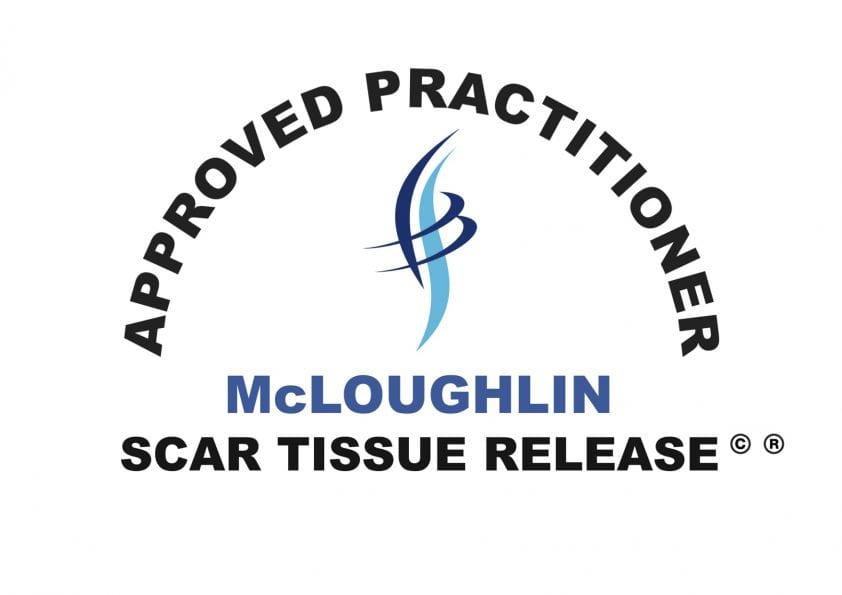Scar Tissue Release: MSTR® – relief for scars & muscles
“Scar Tissue: The effects of post-surgical scars on the human body cannot be underestimated. According to researchers Karel Lewit MD and Sarka Olsanka: ‘If the scar is…untreated, it may be the cause of therapeutic failure and recurrence.”
Source: “Clinical Importance of Active Scars: Abnormal Scars as a Cause of Myofascial Pain.” Lewit & Olanska – 2002
“In other words, no matter what physical therapy intervention is used untreated scars may thwart our best efforts to remedy related pain and restrictions in mobility.”
Source: https://www.mcloughlin-scar-release.com/
McLoughlin Scar Tissue Release (MSTR®) is a myofascial technique, designed to gently and effectively release restricted scars and scar tissue at a pace to suit you. Unlike muscular tension and restrictions which can build up again dependant upon the cause, MSTR® permanently releases the scar tissue restrictions, although the extent to which this can be achieved varies with each client. As such it can have a profound effect on knock-on physical factors such as pain, posture and tendency to injury, as well as on the mental and emotional issues which can be linked to scars and the events that caused them. It is a highly flexible technique which can be effective for the majority of scars no matter how old.
The Course
2nd June 2019, Letchworth
You know I am not one to raise false expectations in my clients. Everyone is an individual and may react differently to treatment. That’s why for me to call McLoughlin Scar Tissue Release MSTR® ‘amazing’ perhaps gives an indication as to how impressed I have been as a therapist with this technique. In my own words to a client, ‘it has blown my little massage mind’. I am honestly convinced it is going to transform my practice and I can’t wait to share it with you.
Best of all, although it was primarily developed for scar tissue, it’s a fascial release technique. This means it is also effective for releasing tight musculature and fascia (the connective tissue surrounding the muscles). Please see my blog on Myofascial Release for more information on this type of treatment.
At the beginning of June it was a real privilege to learn MSTR® – the Mcloughlin Scar Tissue Release technique. My thanks for this opportunity must go to Jen Tiller, the Breathing Coach and founder of Healerzone and tutor Claire Grant. It was a fascinating day, full of discussion, learning, practice, personal experiences and some highly impressive results. It surprised me with its speed and effectiveness to release scar tissue.
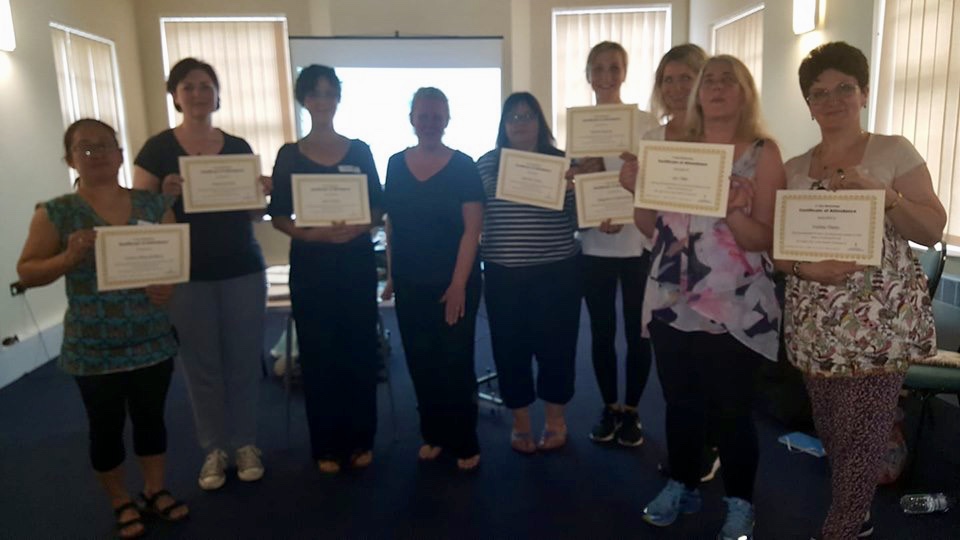
“Each year in the developed world 100 million patients acquire scars, some of which cause considerable problems…
as a result of 55 million elective operations & 25 million operations after trauma.
There are an estimated 11 million keloid scars & 4 million burn scars, 70% of which occur in children.”
Source: https://www.ncbi.nlm.nih.gov/pmc/articles/PMC1125033/
What Is A Scar?
The body naturally forms scar tissue as a response to trauma when the skin is opened, punctured or lacerated either deliberately (surgery) or by accident (injury). As an emergency response to repair and save itself the body creates collagen fibres to stop bleeding. In normal skin formation these fibres are in a regular formation and move normally without restriction, but in scar tissue they are laid down quickly and in a chaotic and disorderly fashion. This results in a thickened, fibrous mass – anyone with a scar can tell you how tight the skin can feel. This can impede movement, proper circulation of blood, congest lymph flow, and impact on range of motion.
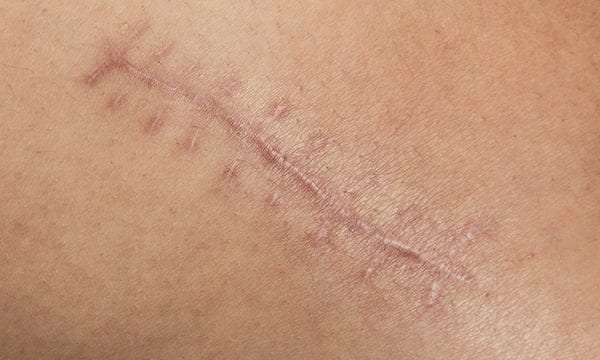
Scar tissue can easily be distinguished from normal skin tissue due to the messy and haphazard way the collagen fibres are laid down
How Can Scar Tissue Affect Us?
So many people are affected by scars and scar tissue, yet in the words of creator of the MSTR® technique, Alastair McLoughlin, it is “the most neglected of all bodywork skills”. Even so, having only a small inoculation scar, I haven’t been affected by them and hadn’t considered that a.). most of the population have scars and b.). how much they restrict everyday physical movement, posture and emotional well-being. Scars can be due to an injury, accident, illness, event or operation and are often linked to trauma which may have been life-threatening or filled with fear.
Physical Effects
The physical effects of scars may be some of the most obvious – the scar itself may be large or apparent to others. However, even a seemingly small surface scar (often seen after laparoscopy or ‘keyhole’ surgery) may hide much more internal scar tissue within and this may cause more issues. The classic example is an appendectomy scar causing right lower back pain – but often the client will not link such pain or injury issues to the scar.
“Scar tissue has the potential to spread in any direction including internally throughout the body. It can also restrict movement or function anywhere in the body from a joint to an organ.”
Source: ‘The Importance of Scar Tissue Release Therapy’, Marjorie Brook
https://www.massagetoday.com/articles/14020/The-Importance-of-Scar-Tissue-Release-Therapy
Restrictions & Posture
- Restriction of the muscles and fascia (the connective tissue surrounding the muscles and organs)
- e.g the area may not be able to glide as freely as before
- Reduced range of motion and movement
- e.g often the person cannot move as they did previously
- Postural distortion
- e.g abdominal scars, cutting through some of the core musculature and fascia, can result in the person being unable to hold themselves upright
- Restrictions and issues at other areas of the body
- e.g. appendectomy scars often result in corresponding issues at the right lower back; a scar at the knee can affect the ankle; abdominal surgery can affect the bladder or bowel function
- Tightness of the skin and area around the scar
- Loss of flexibility
- Muscle and tissue wastage (atrophy)
- Restriction of normal activities due to physical limitations
- e.g. difficulty in doing core exercises with abdominal scar tissue
Sensation
Most commonly clients complain of a loss of feeling and numbness in the area of a scar. This is usually due to some degree of nerve damage, either caused accidentally by the injury or as a consequence of surgery. However, many experience other sensations, some of which may be unpleasant and result in the person avoiding the area being touched, by themselves or others. This can then have knock-on effects as the area becomes increasingly tighter and desensitised due to reduced blood flow, movement, stretching and neural (nerve) stimulation.
“Additionally, the severing of delicate nerve tissue often results in dysthesia (an abnormal unpleasant sensation felt when touched, caused by nerve damage) of not only the scar but the adjacent, surrounding tissue. As the scar is fibrous and non-elastic it will have a dragging and pulling effect.”
Sensations commonly reported may include:
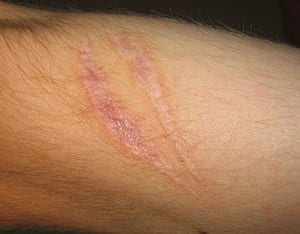
Scar tissue on an arm
- Numbness
- Tingling
- Burning
- Itching
- Pain
- Hypersensitivity
- Dysesthesia/Dysaesthesia – an abnormal unpleasant sensation/strange sensation due to nerve-damage
- Feeling of coldness
- Feeling of heat
- Feeling of ‘disconnection’
- Or simply a feeling that the area is somehow ‘different’ to sensations felt elsewhere in the body
Mental Effects
The mental effects of scarring should not be underestimated. Through talking with clients it’s become apparent to me that scars are often a great source of unhappiness. Elderly clients have confided this with scars decades old. Whilst at a time when photos are plastered all over social media and appearance is so valued body dysmorphia is increasingly becoming a feature of the modern world. Even a short discussion can reveal significant issues and concerns such as:
- dislike of the appearance of the scar
- dislike of the body area
- self-consciousness
- low self-image
- low self-confidence
- body dysmorphia
- disconnection to the body area
- avoidance of the scar or area of the scar
- repression of the memory or emotions around the scar or the events around it
Emotional & Psychological Effects
Even if a person coped well with the scar and the event that caused it at the time, they may still suffer from problems many years afterwards, related either to the scar itself or the events that caused it, which are often stressful or harrowing. This kind of work can have a profound effect on the client. It can help to release deeply-held emotions as well as affecting physical appearance, abilities and day-to-day lives and interactions. Emotional or psychological symptoms that can occur are:
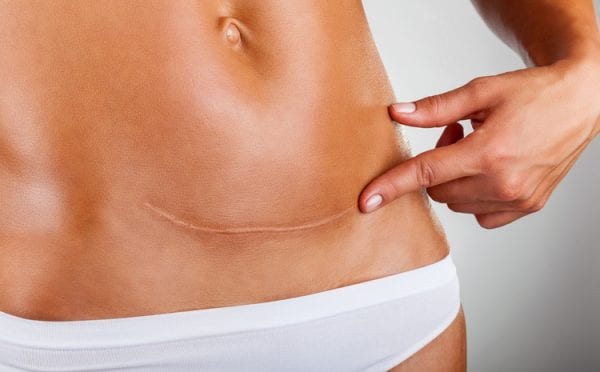
Caesarean section scars are some of the most common, and due to their location can have a significant impact
- PTSD/post-traumatic stress
- shock
- anxiety
- anger
- resentment
- guilt
- fear
- sense of failure
- low self esteem
- sense of worthlessness
- difficulty forming relationships
- Restriction of normal activities due to disinclination e.g. covering up the area, limitations with clothing – not wearing a bikini/swimsuit, going on beach holidays
MSTR® & Energy
Understanding the meridians used in acupuncture, Ayurvedic, Tibetan and Japanese Reiki helps us to realise that the flow of bio-electrical energy (Qi, Chi) may also be impeded by scar tissue. Acupuncturists have long used methods of scar tissue treatment knowing that it was vital for improvement in the flow of Qi/Chi.
“One interesting side-effect of MSTR® work is the common feedback from patients that they feel more energised after scar work has been performed. Possibly an increase of energy (and blood flow) through those restricted pathways”
Source: https://www.mcloughlin-scar-release.com/
Research
Excitingly the first medical research into MSTR® is now being conducted. Initial testing at The Newcastle Clinic in June 2019 proved via ultrasound scanning that MSTR® was effective in reducing participants caesarian-section scars and increasing blood circulation. This evidence-based foundation has paved the way for a larger study to be proposed and I am looking forward to hearing more about it. In the meantime, click here for the Research Report and for more information on research.
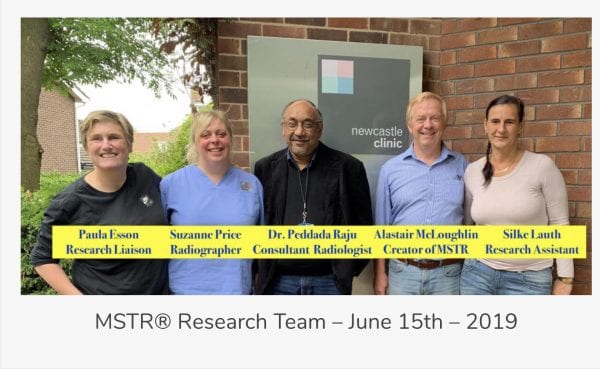
The MSTR® Research Team
MSTR® McLoughlin Scar Tissue Release
Promotional video from McLoughlin Scar Tissue Release – warning: contains images of surgery
The technique has many advantages:
- gentle touch – it can be as delicate and light as required
- no specialist equipment or oil
- treatments are relatively short, depending on the scar to be treated sessions are often just 25 – 45 minutes in total
- sessions can be stopped and started as required by the client, with no specific timeframe
Other Information – What Can Be Treated
- the vast majority of scars – post surgical; trauma wound; burns; cultural scarification, skin grafts
- post-operative scars – can usually be treated, although your consultant’s consent may be required
- any age of scar – even decades old
- on a new/recent scar – the scar must be fully-healed with a minimum of 8 weeks healing time
Additional Applications
There are additional applications for McLoughlin Scar Tissue Release Technique® – not just for visible scars. It can be used in a whole host of additional problems where underlying fibrous tissue is present.
Promotional video from McLoughlin Scar Tissue Release on the use of MSTR with Plantar Fasciitis
This includes:
- Plantar Fasciitis
- Certain cases of frozen shoulder
- Sports injuries (such as quadriceps and hamstring tears)
- Axillary Web Syndrome (AWS)
- Underlying scar tissue from surgeries or tissue traumas
- Any areas of dense fibrous tissue
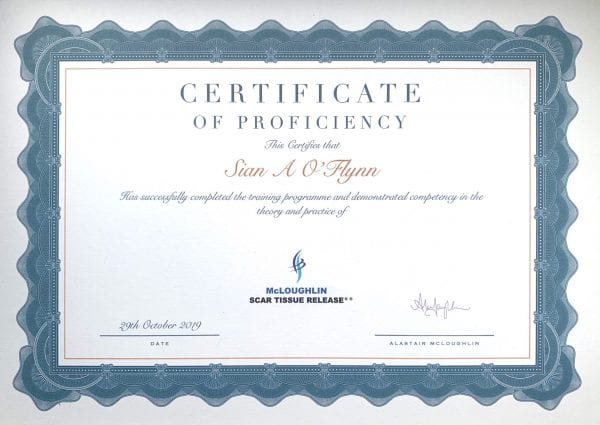
…and I’m qualified! I can’t wait to start offering it to clients. Based on my case studies it can have a profound effect on well-being, everyday physical movement and prevention of injuries
I am so pleased to be able to offer you MSTR® McLoughlin Scar Tissue Release as part of my growing practice

